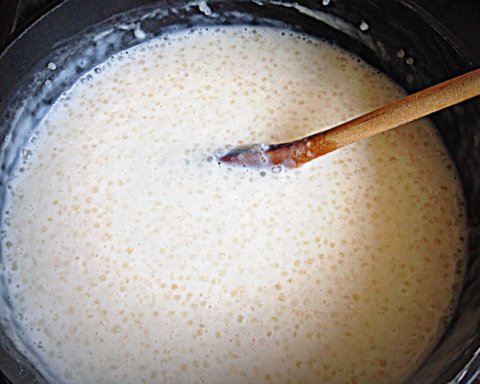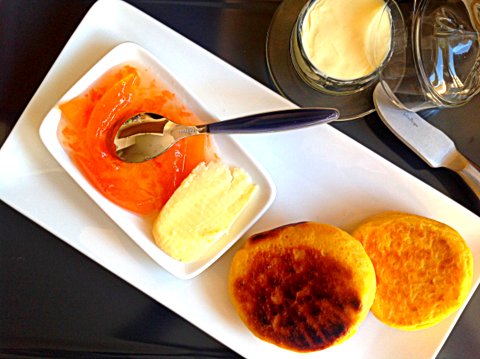A legacy of the Pre-Colombian period...
First I would like to apologize for my absence on Travelling Papilles.
Those past days I did not stop blogging I published some recipes on Voyages des Papilles my blog in French.
I realize that having two blogs is not easy! However it's a real pleasure as I like writing in my two favorite tongues, French and English!
I also thank you again for your visit and nice comments that really motivate me..
With this Tamales recipe, I suggest you a trip
to the Mayas and Incas pre- Hispanic time, a trip to the ancient world.
Historians usually date Tamales at the
Pre-Columbian period and between 5000 and 7000 years before Christ!
This dish is a legacy of Mayas, Incas and Aztecs tribes.
It has survived the centuries and came to us with any changes that usually
occurred for ancient recipes.
Whatever the reasons, these changes have
contributed to the simplification and improvement of the recipes.
And the Cuisines of the World have generally
not escaped to this rule.
The Tamal in Nahuatl tongue (Aztec tongue) «tamalii "which means " surrounded
" was born from the ingenuity of the Incas, Mayas and Aztecs women in the
Pre-Columbian era when they were
recruited as " Cooker " in tribal war camps.
The growing consumption of corn and the
necessity for carrying easily the food have led these women to create the Tamal
which could be compared to our modern sandwiches!
The Tamal could thus be cooked in advance and
reheated or eaten cold if necessary.
Historians have identified a wide variety of
Tamales from this period, from the most realistic to the most improbable (Tamales
with beans, with fruits, frog’s tamales, ant’s tamales ...).
And also different
way for cooking the tamales; steamed, grilled in a Comal (South American
griddle) or cooked in the embers etc.
Today Tamales are often steamed or cooked in
water. They are consumed in most Latin American countries and have different
names depending on the countries, Hallaca in Venezuela, Bollo in Colombia,
Humita in Bolivia and Ecuador, Tamal in Cuba and Mexico...
Recipes also vary from one country to another
or within the same country from one region to another.
The Dough (masa in Spanish) which is an
essential component of this dish, is made with a nixtamalized* corn flour or
fresh ground corn.
The dough and stuffing are cooked in dried or
fresh leaves corn or in banana or avocado leaves.
The
leaves used should not be toxic.
The stuffing can be made of whatever you like,
meat, and fish with vegetables or not prepared with a sauce, it can be contain
cheese… It’s really depends on the
preferences of the cooker and of the family taste.
As it takes time to prepare tamales, in the
Latin American community each member of
the family or friends give a hand to prepare them.
Large amounts of Tamales are then prepared and
frozen to be consumed later.
This is what I did.
I wanted to share this recipe with my french readers on Voyages des Papilles because in France our kitchen is not influenced by South American culture as it is the case for the United States of America or Canada. This is explained by geographic distance.
The Tamales and their great story are little known in France.
I offer the simplest version of tamales and also my own version.
Feel
free to use fresh ground corn to prepare your tamales as desired.
Note: About *Nixtamalisation
Nixtamalization is an ancient Mesoamerican process by which corn kernels are soaked and cooked in an alkaline solution, usually lime water (or more traditionally a mixture of wood ash and water). This process weakens the transparent outer hull, the pericarp.
This method has many advantages, control bacterial activity,and improves the nutritional value.
The product of this process is called nixtamal.
Lime water gives it a characteristic taste. It is ground to obtain a pulp or nixtamal "masa".
Nixtamalization is an ancient Mesoamerican process by which corn kernels are soaked and cooked in an alkaline solution, usually lime water (or more traditionally a mixture of wood ash and water). This process weakens the transparent outer hull, the pericarp.
This method has many advantages, control bacterial activity,and improves the nutritional value.
The product of this process is called nixtamal.
Lime water gives it a characteristic taste. It is ground to obtain a pulp or nixtamal "masa".
For the papillots, you have the choice between
dry or fresh corn leaves, banana leaves, aluminum sheets or a plastic wrap.
I do prefer corn leaves, they give a nice taste
to the dish.
You will also need a steamer to cook the
tamales.
Ingredients: (for about 10 to 12 tamales)
For the dough:
- 235 gr nixtamalized corn flour (Maseca)
- 40 to 45 cl of vegetable or chicken broth
- 35 gr soft butter or lard (optional, I did not use any)
- A pinch of salt
- Oil for greasing the sheets
For the filling :
- Half a roast chicken
- 4 stalks celery
- 3 leeks
- 3 to 4 beautiful carrots
- 3 turnips
- 1 onion
- 1 clove of garlic
- 2 bay leaves
- 3 cloves ( optional)
- 1 tablet of broth
- 1 small can tomato paste
- Parmesan
- Oil
- Salt
Preparation:
Start with the stuffing.
Wash the vegetables peel and cut into julienne
the carrots and turnips.
Cut the leeks and celery into rings.
Peel the onion and garlic and dice them.
In a saucepan over medium heat, heat a
tablespoon of oil.
Brown the onions, garlic and vegetables. Stir
well.
Add the tablet of broth, the tomato paste and
pour water.
Season the sauce with cloves and bay leaves.
Taste and add salt if needed.
Cover the pan.
Shred the chicken.
When the sauce has reduced a bit, add the
chicken.
Stir well and let reduce a little.
Take the pan off the heat.
The stuffing should not be dry. It must remain
a little sauce.
Grate the parmesan and add it to the stuffing.
Prepare the masa dough.
In a bowl, put the flour, a pinch of salt,
butter or lard if you want to add some.
Pour the broth gradually to form dough and
knead at least 6-8 minutes.
Let the dough rest for five minutes.
If you use dry corn leaves, in a large saucepan
bring water to a boil and remove from heat.
Soak the leaves until they become soft.
Discard the water and keep the leaves in the
pot so they do not dry out.
Fresh leaves do not need this treatment, simply
rinse them with clear water and dry.
Finally, if you do not have leaves, you can use
foil or plastic wrap.
Dry the leaves.
Using a brush and a little oil, grease the corn
sheets or foil.
Take a little amount of dough, flatten into the
leaves and add the stuffing.
Gently close the foil and tie with a cooking
string without pressing too much.
Cook the tamales in the steamer for about for
1h30.
Serve them hot in their leaves with a salsa
sauce and vegetables.
tips:
To save time, get help from all family members.
Invent and create your own tamales, add
whatever you like, leftover meats, and roast lamb, fish, vegetables etc.
The meat should be soft.
Finally you can easily replace corn flour by
polenta. It's not really authentic, but what not?
In this case, cook the polenta as you usually
do before. The paste should not be firm.
I hope you will enjoy this immersion in the
ancient world!
Thank you for reading and for your comments.
Chantal
References:
References:
- Le maïs en zones tropicales, R.L. Paliwal, 2002.
- Pre-Columbian Foodways: Interdisciplinary Approaches to Food, Culture, and Markets in Ancient Mesoamerica, 2009 , p. 317
- Nixtamalization - Making Masa and Corn Tortilla (You tube)























